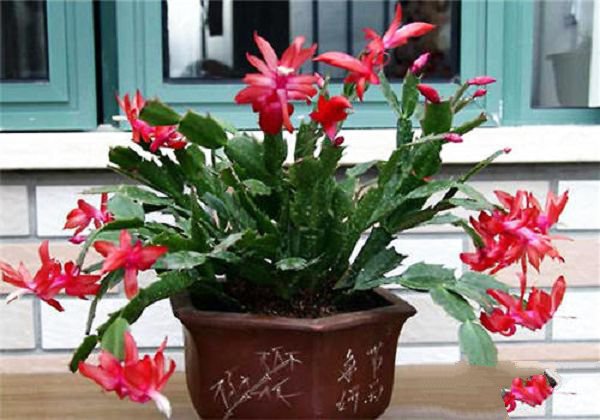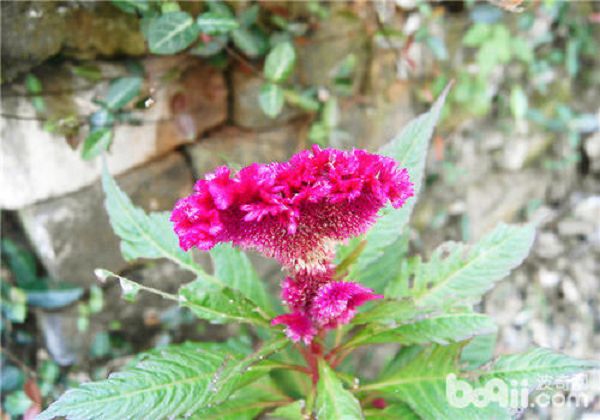Species of soilless cultivation of flowers and key points of cultivation techniques
Soilless cultivation method is also called nutrition cultivation method. Soilless cultivation of flowers is a special cultivation method of supplying nutrients for flower growth with nutrients made of chemical reagents or chemical fertilizers without soil. Generally not limited by land conditions, saving water and fertilizer, less diseases and insect pests, strong growth, neat, thick green leaves, more and large, bright color, long flowering period, convenient for factory production.
1 Typ
Soilless cultivation methods can be divided into five methods, namely, water culture, sand culture, medium culture, spray culture and nutrient film culture, of which the most commonly used are water culture, sand culture and medium culture.
1.1 Aqueous solution culture method
A cultivation method in which the roots of flowers are continuously or discontinuously immersed in nutrient solution. The nutrient solution flows in the cultivation tank to increase the content of air. It is generally necessary to have a 10~15cm deep nutrient solution. It is suitable for plants with inflated bulbs such as daffodils and some aquatic plants. In addition, deep liquid flow technology, deep water floating cultivation, floating plate capillary hydroculture, dynamic floating root method and floating plate hydroponics also belong to hydroponic culture methods, which are suitable for mass production.
1.2 Sand culture method
According to the size of the matrix, it can be divided into sand culture method and gravel culture method. Sand culture is a method of cultivating flowers and plants with sand, perlite, plastic or other inorganic substances with a diameter less than 0.3cm as matrix and then adding nutrient solution. Gravel cultivation is a method of cultivating flowers and plants with gravel, basalt, lava, plastic or other substances larger than 0.3cm in diameter as the matrix and adding nutrient solution. Calcareous (limestone) sand and gravel contain a large amount of calcium carbonate, which will increase the pH of nutrient solution, precipitate iron and affect plant absorption, so only igneous rock (volcanic) gravel and sand are suitable for matrix. The culture liquid fertilizer is Huabao, which can be applied at least once a day in summer and once every other day in winter. There are many kinds of flowers suitable for sand culture, such as geraniums, violets, ivy, Lycoris, cyclamen, cacti, daffodils and so on.
1.3 medium culture method
The medium mainly includes sawdust, straw, cottonseed and so on, and sawdust is mostly used. Taking sawdust medium as an example, sawdust of medium coarseness or fine sawdust with appropriate proportion of planing were used. The sawdust of sequoia and hemlock is better. Some of the sawdust of Platycladus orientalis is poisonous and cannot be used. After fermentation, the sawdust is nutritious, rich in nitrogen, phosphorus and potassium, loose texture, moderate dry and wet, especially suitable for potted asparagus, orchids and so on. Put this potted flower indoors, it is not only clean and hygienic, but also elegant and elegant, it is an ideal boutique to watch.
1.4 spray culture method
Spray culture method, also known as aerosol culture method, is divided into spray culture method and semi-spray culture method according to whether the plant root system is partially immersed in the nutrient liquid layer, that is, all or part of the flower crop root system is suspended in the air of the cultivation trough, and the spray device is used to atomize the nutrient solution into a small droplet, which is directly sprayed to the plant root system to supply root nutrition and water. This can greatly save nutrition and water, at the same time, the oxygen supply of the root system is good, which is beneficial to the development of the root system. However, the requirement of the spray is high, and the fog point should be fine and uniform. In addition, the root system is greatly affected by external temperature, so it is difficult to control.
1.5 nutrient membrane culture method
The invention relates to a hydroponic culture method for planting a plant in a shallow nutrient solution, which can lay a layer of non-woven cloth at the bottom of the container, which can absorb and spread the water, and the root system can not pass through it, and the plant can be planted on the non-woven cloth. This enhances and improves the water absorption and ventilation of flowers.
2 key points of operation technology
2.1 pay attention to the acidity and basicity of nutrient solution
The acidity and basicity of nutrient solution directly affects the state, absorption and availability of nutrients, as well as the growth of flowers and plants. The acidity and basicity of nutrient solution for flower growth varies with species. Generally, flowers are more suitable to grow under weak acid conditions, and the pH value is usually between 5.5 and 6.5. In the management, the pH value of the nutrient solution can be measured by pH test paper. For example, when pH is on the high side, appropriate amount of sulfuric acid solution can be added; when low, sodium hydroxide solution can also be added to correct.
2.2 pay attention to oxygen absorption
In the water culture method, flowers and plants absorb oxygen from the nutrient solution, and the main source of oxygen is to bring oxygen through the nutrient solution falling freely from high places, so it is necessary to irrigate more water, a small number of times. The use of porous material as matrix can reduce the number of irrigation. At the seedling stage, pay attention to the young roots entering the nutrient solution to fully absorb nutrients.
2.3 pay attention to temperature
Because the root temperature plays an important role in the growth and development of flowers, the temperature or room temperature of nutrient solution should be controlled according to the different requirements of different flowers.
2.4 pay attention to disinfection
The continuous use of the substrate of soilless culture will make the bacteria breed and gather. Therefore, the substrate should be disinfected after each planting in order to reuse.
2.4.1 Steam disinfection can be carried out by putting the steam pipe into the cultivation medium. The depth of 80cm can be reached by culturing steam with sawdust. When sand and sawdust are mixed with 3 ∶ 1, steam can enter the depth of 10cm.
2.4.2 formaldehyde is a good fungicide for sawdust, straw and other media. 50 liters of water can be added to 1L of formaldehyde solution with 40% concentration, which can be applied to the medium according to the dosage of 20~40L/m2, and then covered with plastic film for 1 day, which can kill virus and air-dry the medium for about 2 weeks before planting. For sand medium, the cultivation bed can be soaked with 1% concentration of bleach for 0.5 h, and then washed with fresh water to eliminate the residual chlorine.
Related
- What if the leaves of potted flowers turn yellow?
- Florescence Control of several Flowers
- Anti-freezing technology and post-freezing nursing technology of flowers
- What is the classification of flowers? What are the common methods of flower classification?
- Prevention and control of alkali and acid damage of flowers in courtyard
- Technology of Anti-freezing and restoring growth of Flower seedlings in greenhouse and greenhouse
- How does flower fertilization not hurt the root? Fertilization technology of flowers
- Key points of disinfection in flower greenhouse
- Several pesticides that are banned or used cautiously in flowers
- How to fertilize the flowers that watch the leaves?



